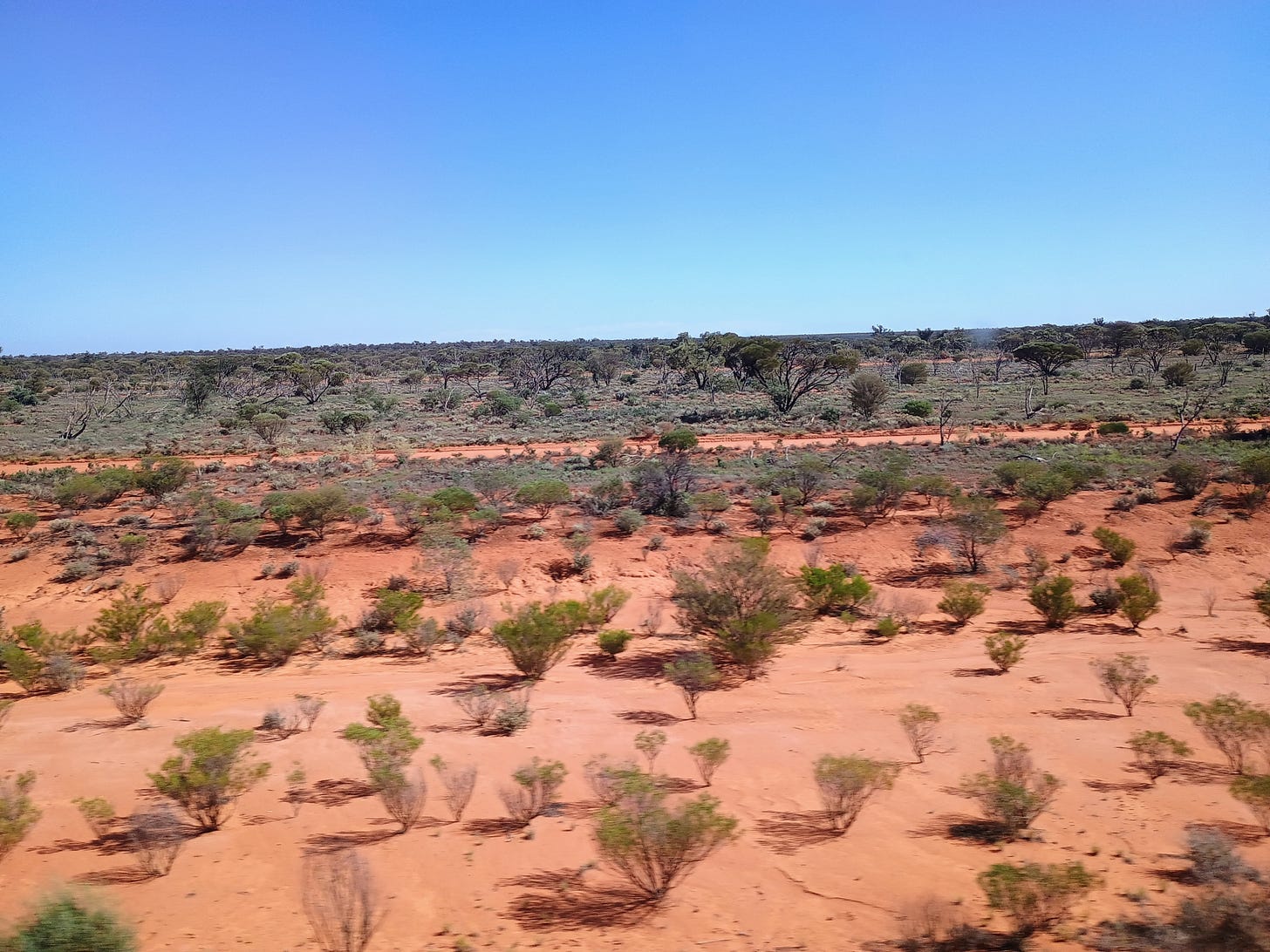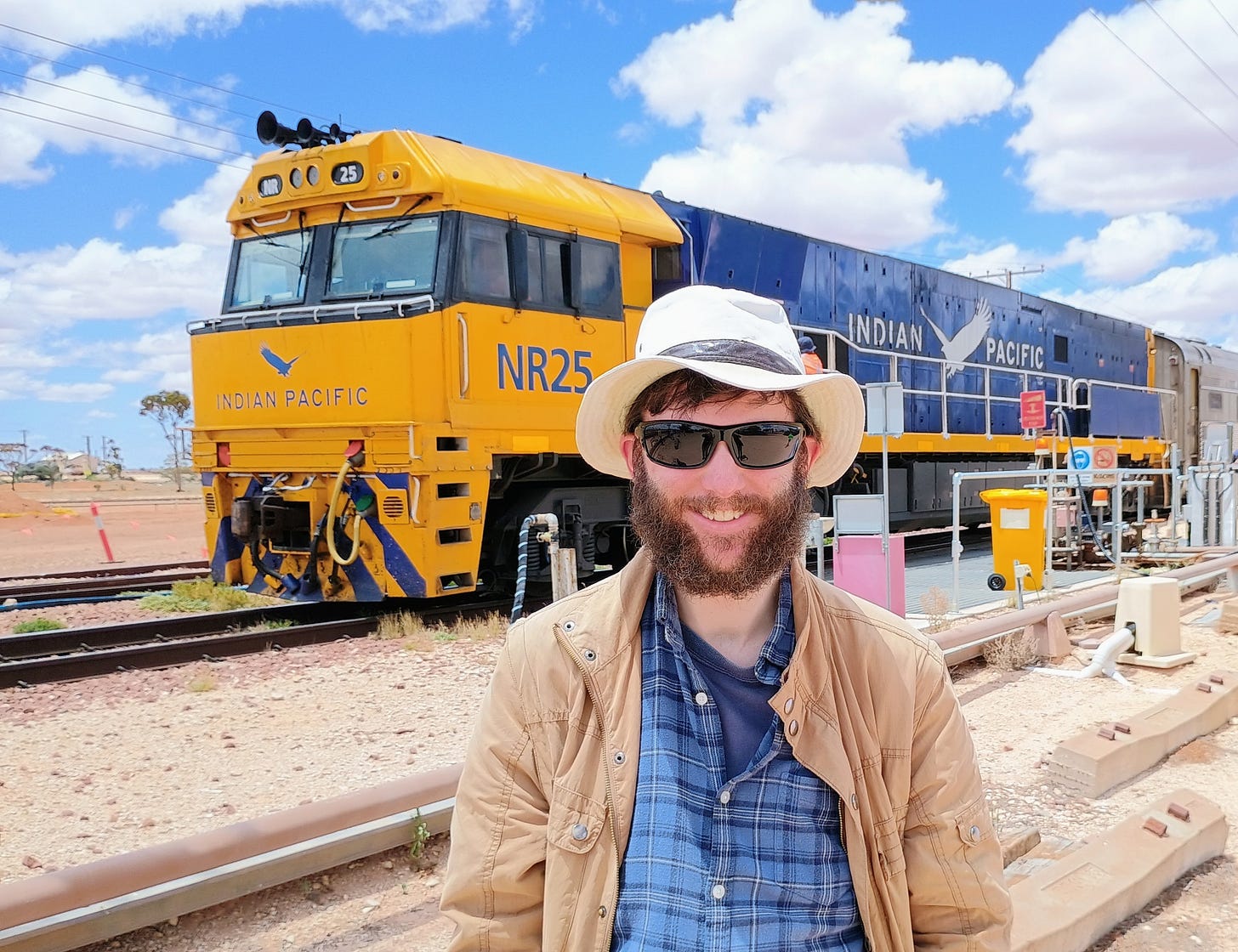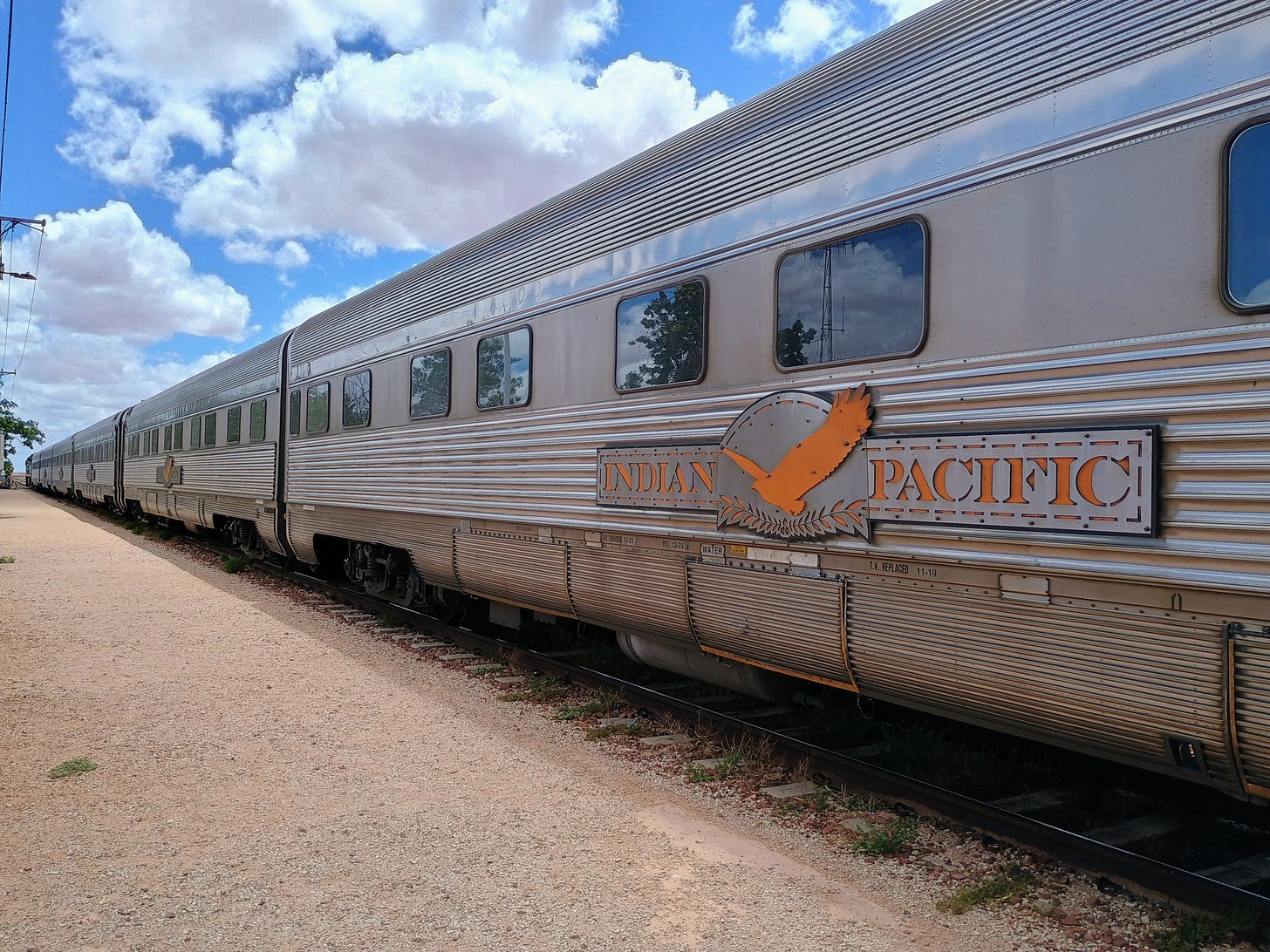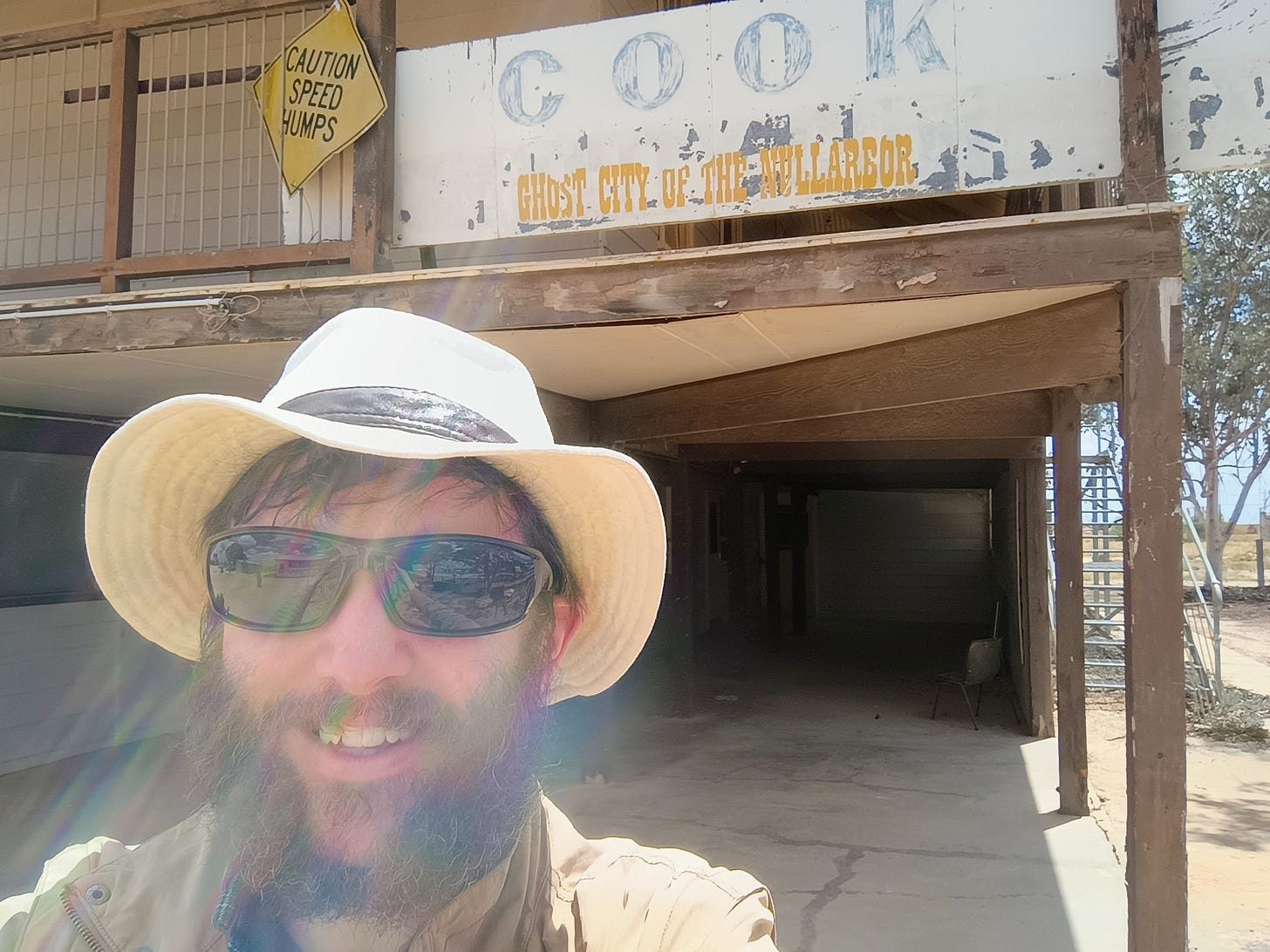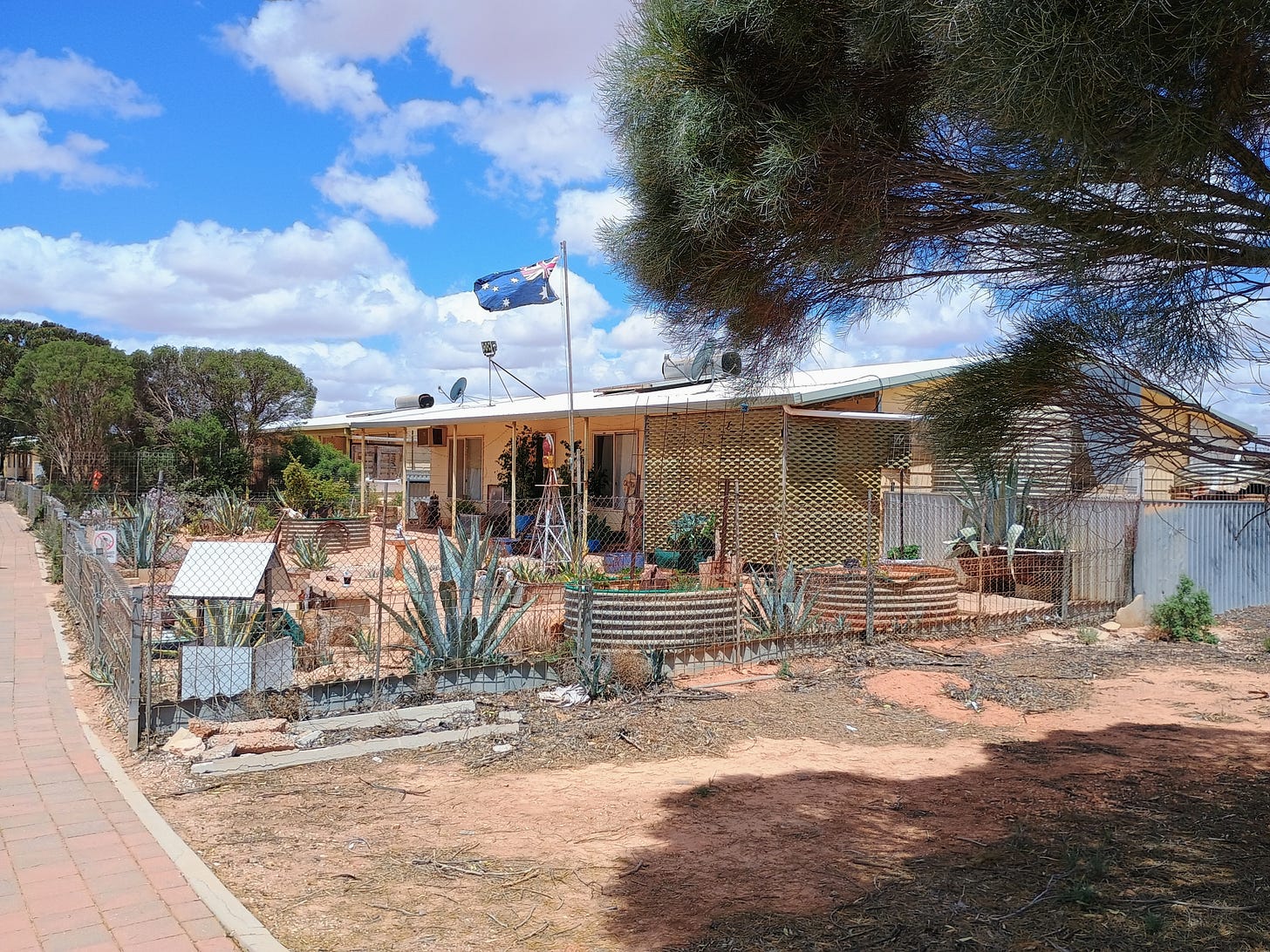Day 73 Indian-Pacific (Part 1)
When I woke up this morning and looked out my window, I already had a view of the red centre of Australia. Despite how dry and hot it was outside, I was still able to have a proper shower as if I were still in Adelaide. This made me realise how much water the train must need, and why it took so long last night to get the train ready!
Hungry, I went along to the dining car and had a breakfast of cereal, toast and yogurt (although I could have had a full English if I wanted). One of the nice things about meals on the trains and cruise ships is you are introduced to other passengers. I had breakfast with Lorraine. She was originally from Vancouver (one of my previous stops) but now lives in Sydney with her family.
So about the train. It’s a weekly service of 29 carridges, travelling at 53 miles per hour, over a distance of 1327 miles (between Adelaide and Perth). Like I said in part 1, the full train runs from Sydney to Perth. It was named by an oil baron in a 1969 competition to name the train. His winning entry contained the two oceans the train links.
The first service ran in 1970. Since the 1890s a skeleton rail network existed across Australia, but a huge chunk of 1242 miles was missing between Port Augusta in the east and Kalgoorlie in the west. This portion of track took 3400 workers five years to construct (from 1912 to 1917) and was done in two parts. One line going east, the other west, and they met in the middle in 1917. However, because the lines had been built according to different gauges (standard, narrow or broad), passengers needed to change trains to complete their journey. It wasn’t until 1970 that the track was converted, allowing a full transcontinental journey on the one train.
The Indian Pacific is rated one of the great rail journeys of the world, crossing the Nullarbor desert. It used to have an economy class, with sit-up seats (similar to what I used on Amtrak). However, a Federal Government subsidy was withdrawn in 2016 so economy class became no longer viable, and the train switched to servicing the luxury travel market. This was foreseen back in 1951 when showers were first installed in the ‘luxury cars’, with hot and cold running water, air conditioning and refrigeration.
The first stop of the day was at Cook to take on water. Established in 1917 as a support town for the railway, Cook is now virtually a ghost town, with only a temporary population of a handful of people. However, it was once a community of over 50, with a school and hospital. The hospital had a great sign saying, “If you’re crook, come to Cook” (crook Aussie slang for ill). We had time to wander around what is left of the town. It amazed me how resourceful humans are, that they could make a town even in that wilderness.
To be continued…




